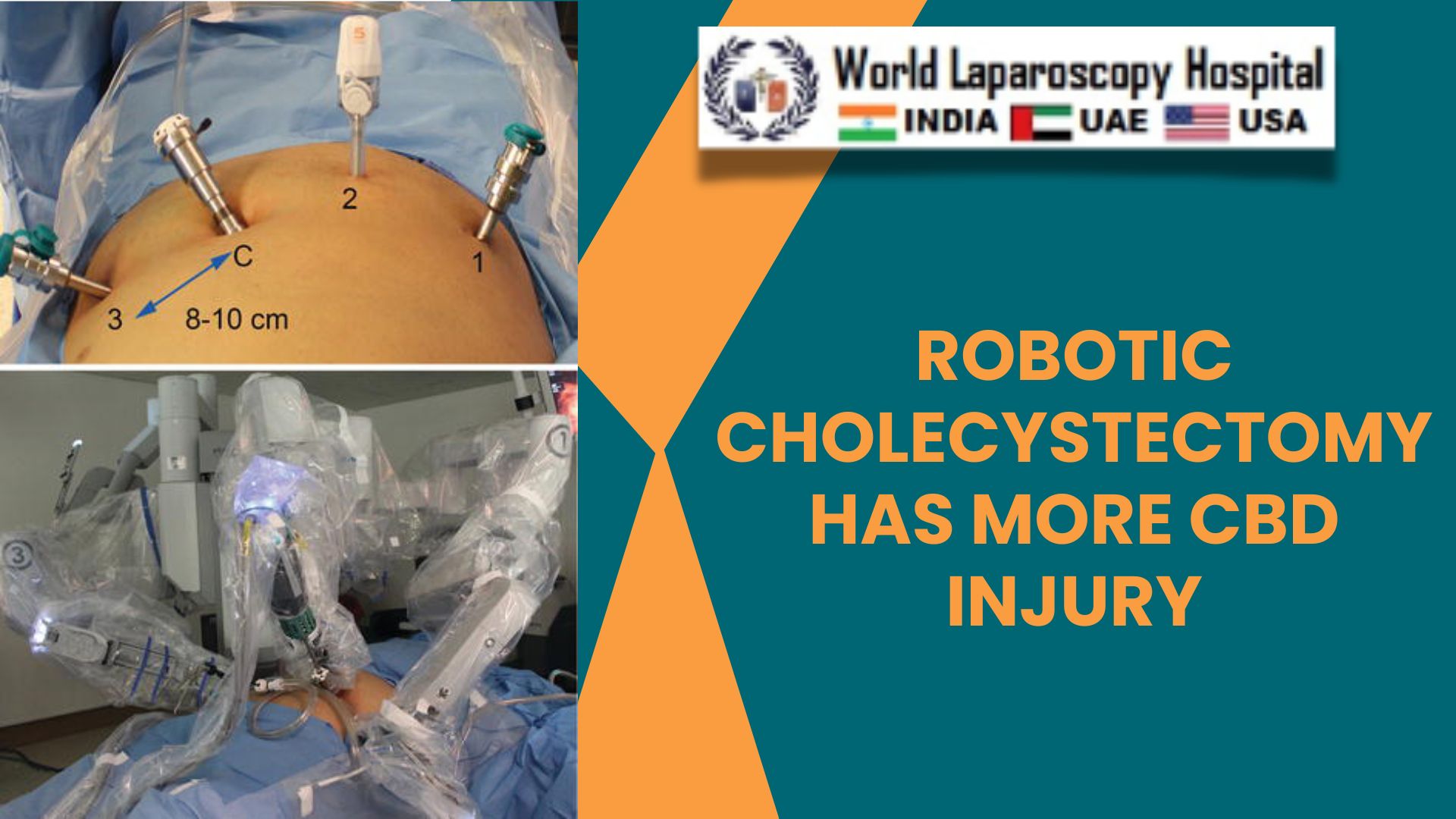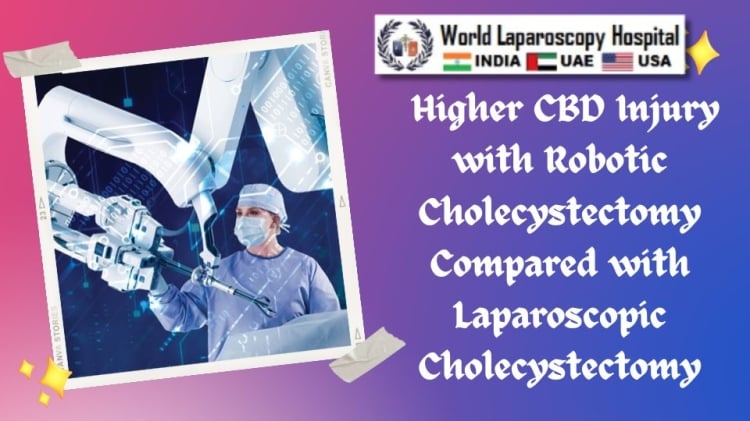In a significant recent study, researchers have uncovered a concerning trend in the realm of gallbladder surgery. The study, published in the Journal of Surgical Research, indicates that patients undergoing robotic-assisted cholecystectomy face a higher risk of common bile duct (CBD) injury compared to those who undergo the traditional laparoscopic approach.
The Rise of Robotic-Assisted Surgery
Robotic-assisted surgery has gained popularity over the past decade, promising enhanced precision, better visualization, and greater surgeon control. This technology has been increasingly adopted for various procedures, including cholecystectomy—the surgical removal of the gallbladder. Despite these purported advantages, the new study sheds light on a critical drawback associated with the robotic approach.
Methodology and Findings
The research team, comprising experts from several leading medical institutions, conducted a comprehensive analysis of surgical outcomes. They examined data from over 15,000 cholecystectomy cases performed between 2015 and 2023. The study meticulously compared the incidence of CBD injuries between robotic-assisted and laparoscopic cholecystectomies.
The findings were stark: the incidence of CBD injuries was significantly higher in the robotic group. Specifically, 1.5% of patients undergoing robotic-assisted cholecystectomy experienced CBD injuries, compared to 0.6% in the laparoscopic group. This threefold increase raises important questions about the safety and efficacy of the robotic approach for this common procedure.

Possible Explanations
Several factors may contribute to the higher incidence of CBD injuries in robotic-assisted cholecystectomy:
-
Learning Curve: Despite the advanced technology, robotic surgery requires a steep learning curve. Surgeons transitioning from laparoscopic to robotic techniques may face challenges in mastering the new system, potentially leading to a higher risk of complications.
-
System Limitations: While robotic systems offer enhanced visualization and dexterity, they may also limit tactile feedback. This lack of haptic sensation could impair the surgeon's ability to detect and avoid critical structures such as the CBD.
-
Complex Case Selection: It is possible that more complex cases are being preferentially selected for robotic surgery. These challenging cases inherently carry a higher risk of complications, which might skew the comparative injury rates.
Implications for Surgical Practice
The study's findings have significant implications for surgical practice and patient safety. Given the higher risk of CBD injuries with robotic-assisted cholecystectomy, surgeons and healthcare institutions must carefully consider the choice of surgical approach. While robotic surgery remains a valuable tool for many procedures, its use for cholecystectomy should be weighed against the demonstrated safety of the laparoscopic technique.
The Disadvantages of Robotic Surgery
Robotic surgery has revolutionized the field of minimally invasive surgery, offering benefits such as enhanced precision, greater dexterity, and improved visualization. Despite these advantages, it is essential to recognize and address the disadvantages associated with robotic surgery. Understanding these limitations can help healthcare providers make informed decisions about when to use this advanced technology and ensure optimal patient outcomes.
1. High Cost
One of the most significant disadvantages of robotic surgery is the high cost associated with the equipment and procedures. Robotic surgical systems, such as the da Vinci Surgical System, are expensive to purchase and maintain. These costs include not only the initial investment but also ongoing expenses for maintenance, software upgrades, and disposable instruments. Consequently, the increased cost can be a burden on healthcare institutions and may limit access to robotic surgery for patients, particularly in resource-limited settings.
2. Steep Learning Curve
While robotic systems offer enhanced capabilities, they also require extensive training and practice for surgeons to become proficient. The learning curve for robotic surgery can be steep, and it may take significant time and experience for surgeons to develop the necessary skills. During this learning period, the risk of complications and suboptimal outcomes may be higher. Additionally, the need for specialized training programs and certification can further add to the overall cost and complexity of adopting robotic surgery.
3. Lack of Tactile Feedback
One inherent limitation of robotic surgery is the lack of tactile feedback. In traditional open or laparoscopic surgery, surgeons rely on their sense of touch to assess tissue texture, tension, and resistance. Robotic systems, however, do not provide direct tactile feedback, which can make it challenging for surgeons to detect subtle differences in tissue or to sense the amount of force being applied. This lack of haptic feedback can potentially lead to inadvertent injuries to delicate structures, such as nerves and blood vessels.
4. Extended Operative Time
Robotic surgeries can often take longer than traditional laparoscopic or open procedures. The setup and docking of the robotic system, as well as the additional steps involved in the robotic approach, can increase the overall operative time. Longer surgical times can be associated with increased risks of complications, such as infections and blood clots, and may also lead to longer anesthesia durations, which can impact patient recovery.
5. Limited Accessibility
Robotic surgical systems are not universally available, particularly in smaller or rural hospitals. The high cost and need for specialized infrastructure can limit the adoption of robotic surgery to larger, well-funded medical centers. This limited accessibility can result in disparities in the availability of advanced surgical options for patients based on geographic location and institutional resources.
6. Potential for Technical Malfunctions
Like any advanced technology, robotic surgical systems are susceptible to technical malfunctions and failures. Issues such as software glitches, mechanical failures, and instrument malfunctions can occur during surgery, potentially compromising patient safety. While redundant safety features and protocols are in place to address these issues, the possibility of technical problems remains a concern.
7. Increased Risk in Complex Cases
Although robotic surgery offers enhanced precision, it may not be suitable for all types of surgeries, particularly those involving highly complex or emergent cases. In some situations, the complexity of the procedure or the urgency required may make traditional open or laparoscopic approaches more appropriate. Additionally, the transition from robotic to open surgery in the event of complications can be challenging and may require a high level of expertise.
While robotic surgery represents a significant advancement in the field of minimally invasive surgery, it is not without its drawbacks. High costs, a steep learning curve, lack of tactile feedback, extended operative times, limited accessibility, potential for technical malfunctions, and increased risk in complex cases are all important factors to consider. Healthcare providers must weigh these disadvantages against the potential benefits of robotic surgery and make informed decisions to ensure the best possible outcomes for their patients. Ongoing research, training, and technological improvements are essential to address these challenges and optimize the use of robotic surgery in clinical practice.
Conclusion
As robotic-assisted surgery continues to evolve, it is crucial for the medical community to critically evaluate its benefits and limitations. This study underscores the need for ongoing training, careful patient selection, and rigorous outcome monitoring to ensure the highest standards of care. Ultimately, the goal is to provide patients with the safest and most effective surgical options available, whether through advanced robotic systems or time-tested laparoscopic techniques.
https://worldlaparoscopyhospital.blogspot.com/






